What is the derivative of the function \( f(x) = 3x^2 + 2x + 1 \)?
\( 3x + 2 \)
\( 6x + 2 \)
\( 6x^2 + 2x \)
\( 3x^2 + 2 \)
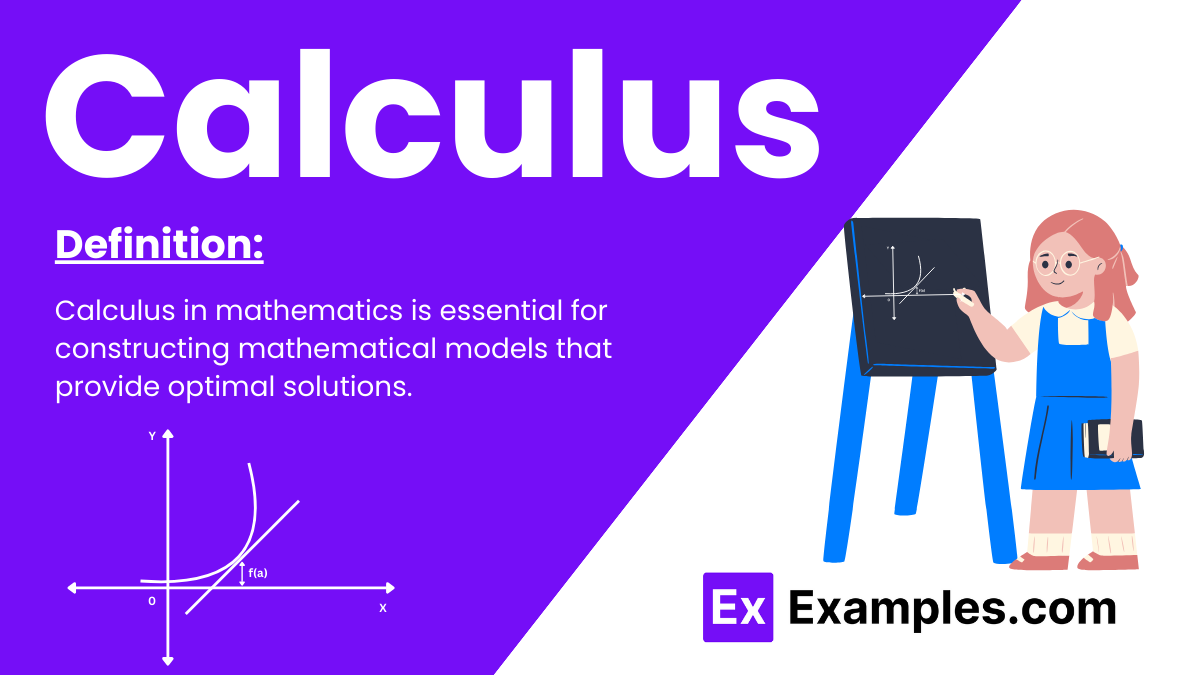
Calculus is a crucial branch of mathematics that deals with the concepts of rate of change and motion. The two main pillars of calculus are derivatives and integrals:
Calculus is also known as infinitesimal calculus or “the calculus of infinitesimals,” referring to the study of continuous changes using quantities nearly equal to zero but not exactly zero. This classical approach helps to analyze and understand the continuous changes in function
Calculus in mathematics is essential for constructing mathematical models that provide optimal solutions.Calculus focuses on some important topics covered in math such as differentiation, integration, limits, functions, and so on. Calculus, a branch of mathematics
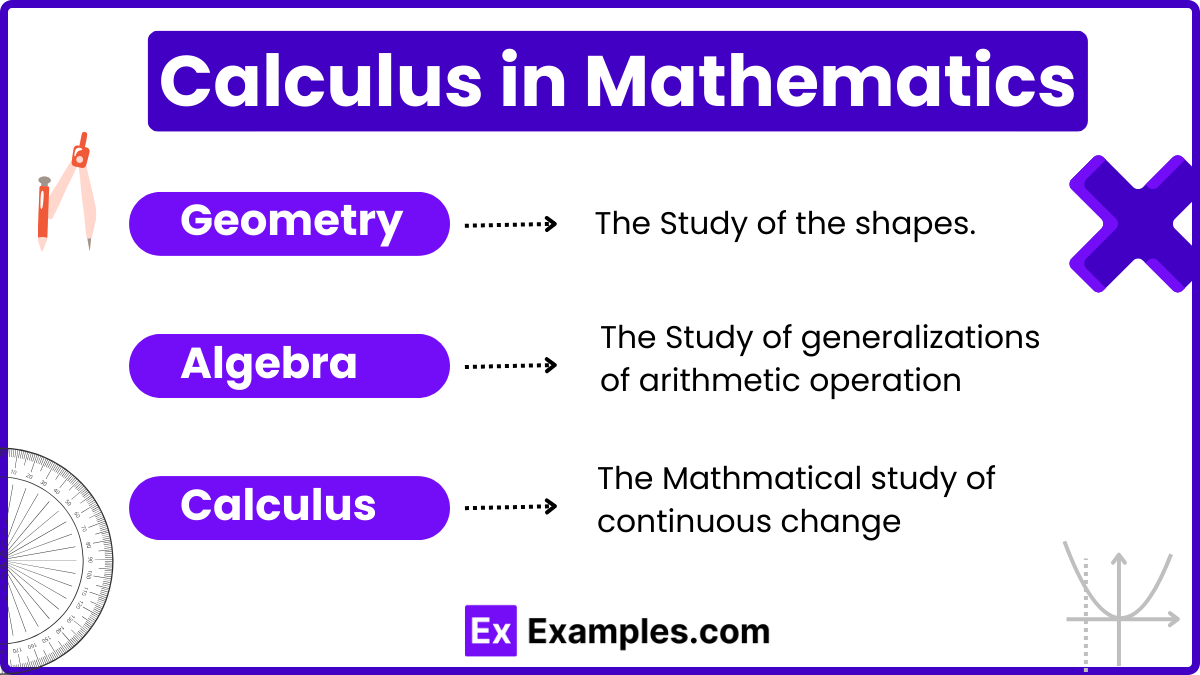
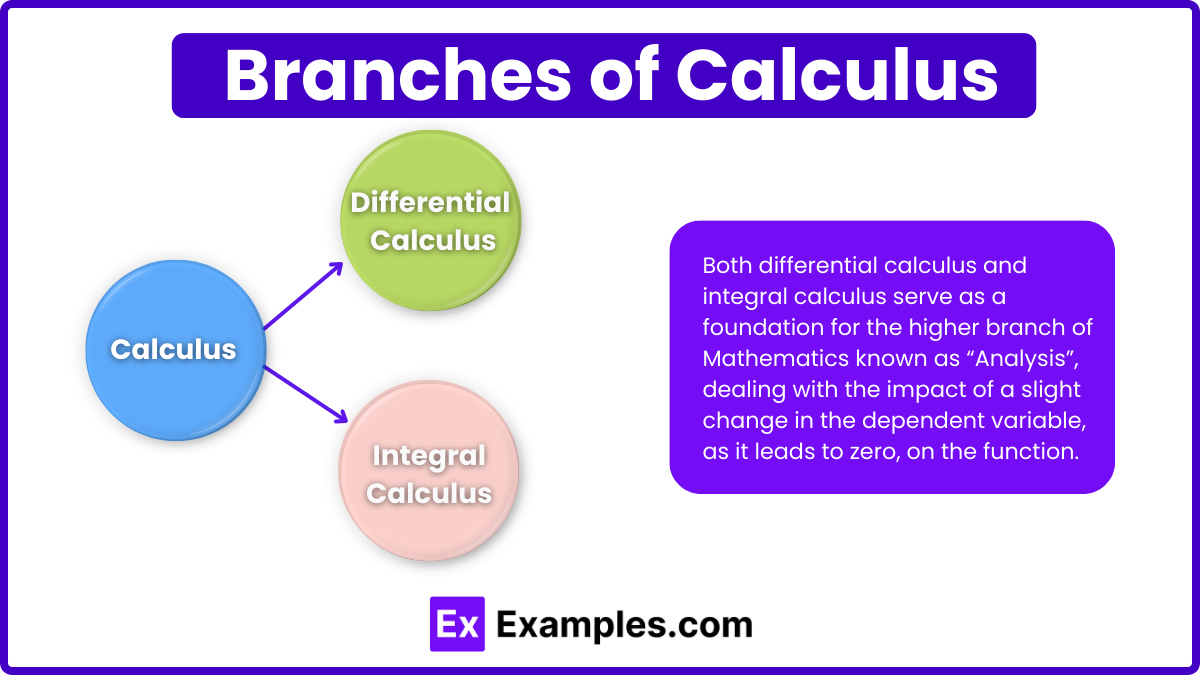
Calculus is a fundamental branch of mathematics that deals with the study of rates of change and the accumulation of quantities. It is divided into two main areas:
In calculus, functions describe the relationship between two variables: the independent variable and the dependent variable. Let’s explore this concept more clearly:
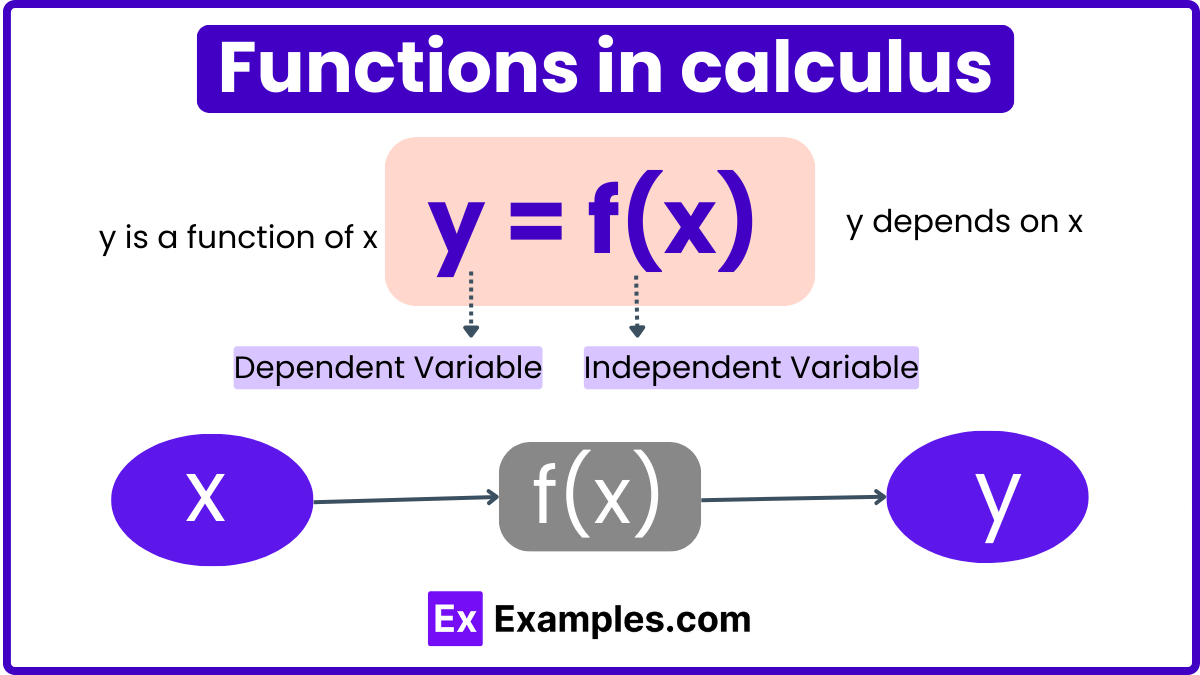
Let’s simplify the concept of a function using the example of making a pizza:
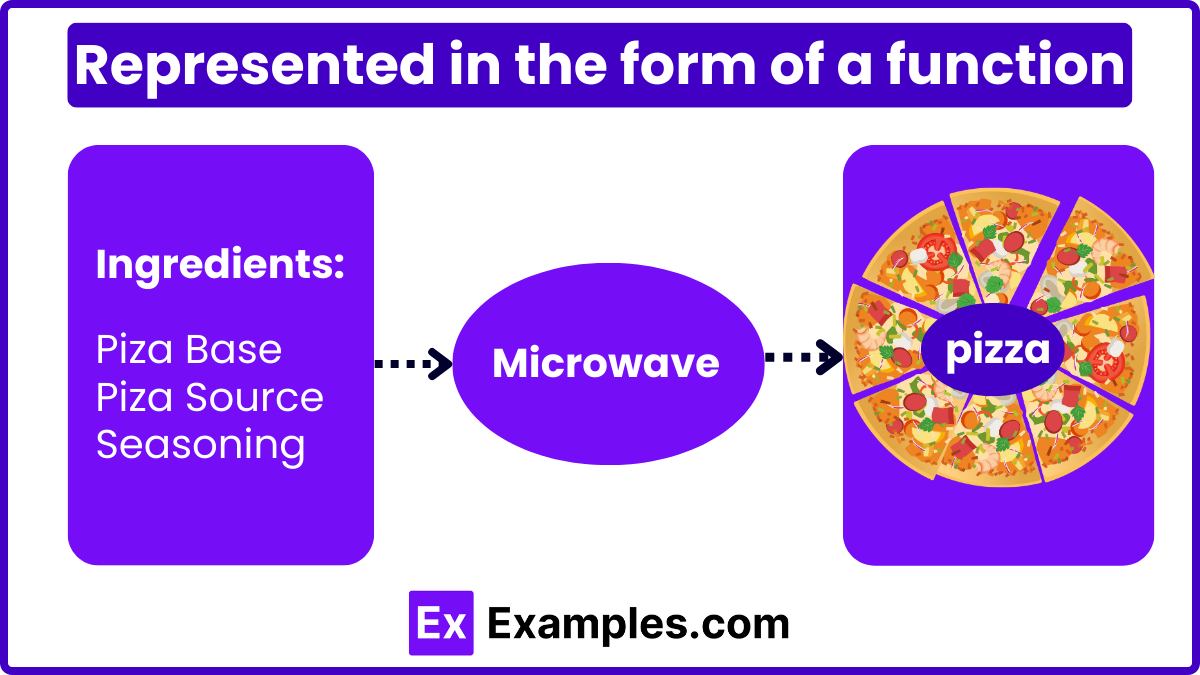
Let’s take another example
Suppose that: y = x³
| Value of x | Value of y |
|---|---|
| 1 | 1 |
| 2 | 9 |
| 9 | 729 |
| 11 | 1331 |

Differential calculus deals with finding the rate of change of a function with respect to its variables. Here are its key components:
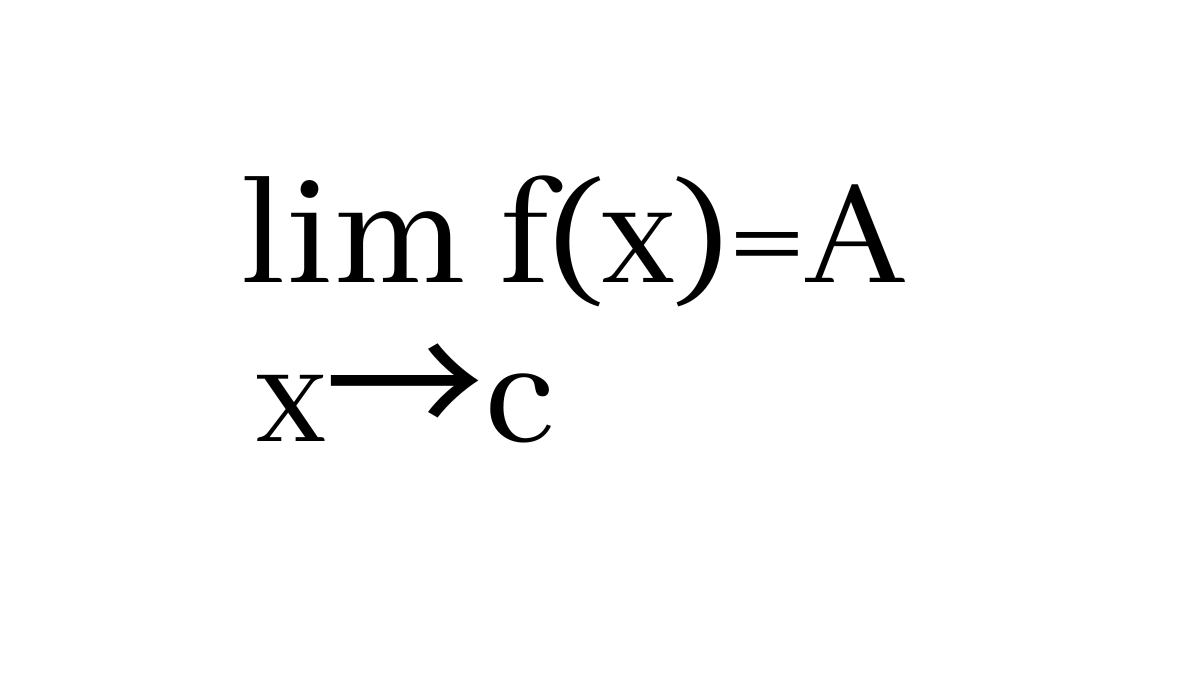
This means the function 𝑓(𝑥) approaches 𝐴 as 𝑥 gets closer to 𝑐.
Integral calculus is the study of integrals and their properties, offering powerful tools for various applications:
Indefinite Integral: An indefinite integral doesn’t specify upper or lower limits, representing a general form of integration. Because of this, it includes an integration constant 𝐶:
∫f(x)dx=F(x)+C
Here, 𝐹(𝑥) is the antiderivative of 𝑓(𝑥), meaning 𝐹′(𝑥)=𝑓(𝑥).
Definite Integral: A definite integral has specific upper and lower limits, allowing it to compute the exact area under a curve between these bounds. It’s represented as:
∫ₐᵇ f(x) dx=F(b)−F(a)
This gives the area between the function 𝑓(𝑥) and the x-axis from 𝑥=𝑎 to 𝑥=𝑏.
Calculus formulas can be broadly divided into the following six broad sets of formulas. The six broad formulas are related to limits, differentiation, integration, definite integrals, application of differentiation, and differential equations.
Limits Formulas: Limit formulas assist in finding the value a function approaches as its input nears a specific point, allowing for precise approximations of the function’s behavior at that point.
limₓ→₀ (xⁿ – aⁿ )(x – a) = na⁽ⁿ ⁻ ¹⁾
limₓ→₀ (sin x)/x = 1
limₓ→₀ (tan x)/x = 1
limₓ→₀ (eˣ – 1)/x = 1
limₓ→₀ (aˣ – 1)/x = logₑᵃ
limₓ→∞ (1 + (1/x))ˣ = e
limₓ→₀ (1 + x)¹/ˣ = e
limₓ→₀ (1 + (a/x))ˣ = eᵃ
Differentiation Formulas: Differentiation Formulas are applicable for algebraic expressions, trigonometric ratios, inverse trigonometry, and exponential terms.
d/dx (xⁿ ) = nxⁿ ⁻ ¹
d/dx (Constant) = 0
d/dx (eˣ) = eˣ
d/dx (aˣ = a · ln a
d/dx (ln x) = 1/x
d/dx (sin x) = cos x
d/dx (cos x) = -sin x
d/dx (tan x) = sec²x
d/dx (cot x) = -cosec²x
d/dx (sec x) = sec x · tan x
d/dx (cosec x) = -cosec x · cot x
Integration Formula: Integrals formulas can be derived from differentiation formulas, and are complimentary to differentiation formulas.
∫ xⁿ dx = xⁿ⁺¹/(n + 1) + C
∫ 1 dx = x + C
∫ ex dx = ex + C
∫(1/x) dx = ln |x| + C
∫ aˣ dx = (aˣ/log a) + C
∫ cos x dx = sin x + C
∫ sin x dx = -cos x + C
∫ sec²x dx = tan x + C
∫ cosec²x dx = -cot x + C
∫ sec x tan x dx = sec x + C
∫ cosec x cot x dx = -cosec x + C
Definite Integrals Formulas:
∫ᵇₐ f'(x) dx = f(b) – f(a), this is known as fundamental theorem of calculus
∫ᵇₐ f(x) dx = ∫ᵇₐ f(t) dt
∫ᵇₐ f(x) dx = – ∫ᵃ₆f(x) dx
∫ᵇₐ f(x) dx = ∫ᶜₐ f(x) dx + ∫ᵇ꜀ f(x) dx
∫ᵇₐ f(x) dx = ∫ᵇₐ f(a + b – x) dx
∫ᵇ₀ f(x) dx = ∫ᵃ₀ f(a – x) dx
∫ᵇ₋ₐ f(x) dx = 2∫ᵃ₀ f(x) dx, f is an even function
∫ᵇ₋ₐ f(x) dx = 0 , f is an odd function
Application of Differentiation Formulas:
Differentiation formulas are valuable for a range of applications. They help approximate and estimate values, and can be used to find equations of tangents and normals to a curve at a given point. Additionally, they allow us to calculate maxima and minima, enabling optimization in various fields. Differentiation is also essential for understanding the rates of change in numerous physical events, from motion and growth to economic trends and more.
dy/dx = (dy/dt)/(dx/dt)
Equation of a Tangent: y – y₁ = dy/dx · (x – x₁)
Equation of a Normal: y – y₁ = -1/(dy/dx) · (x – x₁)
Differential Equations Formula: Differential equations are equations that involve derivatives, capturing the relationship between changing variables. In these equations, the unknown function 𝑦 is represented as a function of the variable 𝑥. The derivative 𝑑𝑦/𝑑𝑥 serves as a key component of the equation, describing the rate at which 𝑦 changes concerning 𝑥. Differential equations are fundamental tools for modeling dynamic systems and capturing how variables interact over time.
Homogeneous Differential Equation: f(λx, λy) = λⁿf(x, y)
Linear Differential Equation: dy/dx + Py = Q. The general solution of linear differential equation is y.e– ∫ᴾ ᵈˣ = ∫(Q · e∫ᴾ ᵈˣ ) dx + C
Practice Problems
Question:
A function 𝑓(𝑥) is defined as 𝑓(𝑥)=3𝑥²−4𝑥+1
Answer:
f′'(x) = d/dx(3x²−4x+1) = 6x−4
2. Substituting 𝑥=2x=2 into the derivative:
f′'(2)=6(2)−4=12−4=8
Question: Evaluate the definite integral ∫³₁(2𝑥+1) 𝑑𝑥
Answer: The definite integral is computed by finding the antiderivative of the function 2𝑥+1 and then evaluating it at the specified limits:
∫³₁(2x+1)dx = [x²+x]³₁
Evaluating at 𝑥=3 and 𝑥=1:
=(3²+3)−(1²+1)
= (9+3)−(1+1)
= 12−2
= 10
Therefore, the value of the definite integral ∫³₁(2x+1)dx is 10.
Question: Solve the differential equation 𝑑𝑦/𝑑𝑥=2𝑥 by finding the general solution.
Answer: This is a first-order differential equation, which can be solved by integrating both sides:
𝑑𝑦/𝑑𝑥 = 2𝑥 ⟹ dy = 2x dx
Integrating the right side with respect to 𝑥:
∫dy = ∫2x dx
y=x²+C
Therefore, the general solution to the differential equation 𝑑𝑦/𝑑𝑥=2𝑥 is 𝑦=𝑥²+𝐶, where C is the integration constant.
Calculus can be challenging initially due to its abstract nature and concepts like limits, derivatives, and integrals. However, with practice, it becomes more intuitive, as it provides tools for solving real-world problems and understanding the relationships between changing variables.
Calculus is the branch of mathematics that deals with change and motion. It consists of two main areas: differential calculus, which examines how functions change at a specific point, and integral calculus, which accumulates or aggregates quantities to compute total values or areas.
Algebra focuses on manipulating and solving equations with known and unknown variables, using operations such as addition and multiplication. Calculus builds on algebra, exploring how functions change over time, how they can be integrated to compute areas, and how to model and optimize relationships between variables.
Basic calculus helps understand and model changes in various fields. It finds the rate of change of functions, accumulates quantities over time, and provides solutions for optimizing systems. Applications include science, engineering, economics, and finance, helping to solve complex problems and model dynamic systems.
Calculus may be more challenging than algebra for some, as it introduces new concepts like limits, derivatives, and integrals. However, algebra provides foundational skills needed for calculus. The difficulty depends on an individual’s familiarity with abstract concepts and mathematical reasoning.
Text prompt
Add Tone
10 Examples of Public speaking
20 Examples of Gas lighting
What is the derivative of the function \( f(x) = 3x^2 + 2x + 1 \)?
\( 3x + 2 \)
\( 6x + 2 \)
\( 6x^2 + 2x \)
\( 3x^2 + 2 \)
Find the integral of \( \int (2x + 3) \, dx \).
\( x^2 + 3x + C \)
\( x^2 + 3x \)
\( 2x^2 + 3x + C \)
\( x^2 + \frac{3x}{2} \)
What is the limit of \( \lim_{x \to 0} \frac{\sin(x)}{x} \)?
0
1
\(\infty\)
\(-\infty\)
Determine the second derivative of \( f(x) = x^3 \).
\( 6x \)
\( 3x^2 \)
\( 6x^2 \)
\( 3x \)
Evaluate the definite integral \( \int_0^1 3x^2 \, dx \).
1
3
1.5
0.5
What is the antiderivative of \( \frac{1}{x} \)?
\( \ln(x) + C \)
\( \frac{1}{x^2} + C \)
\( \ln|x| + C \)
\( \frac{1}{2x} + C \)
Solve for the derivative of \( f(x) = e^x \).
\( e^x \)
\( e^{x-1} \)
\( x e^x \)
\( x e^{x-1} \)
What is the critical point of \( f(x) = x^2 - 4x + 4 \)?
0
2
-2
6
Compute the derivative of \( f(x) = \ln(x^2) \).
\( \frac{2}{x} \)
\( \frac{1}{x} \)
\( \frac{2x}{x^2} \)
\( \frac{2}{x^2} \)
Find the integral of \( \int e^x \, dx \).
\( e^x + C \)
\( e^{x+1} + C \)
\( e^x - 1 + C \)
\( x e^x + C \)
Before you leave, take our quick quiz to enhance your learning!

